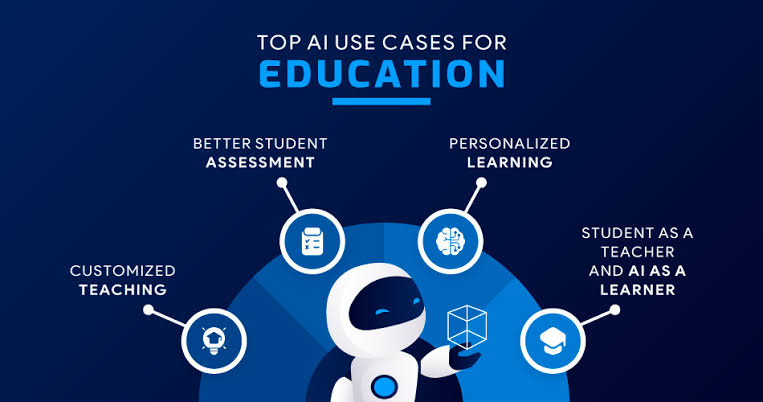Explore the benefits and challenges of AI automation in education. Learn how AI enhances personalized learning, administrative efficiency, and resource access while addressing issues such as data privacy, bias, and implementation costs. Discover how AI is shaping the future of education and what steps are needed to overcome its challenges.
Artificial Intelligence (AI) is making its mark in fields and education is no exception. The application of AI in education involves utilizing technology to improve and innovate teaching and learning methods. While this integration offers advantages, like tailored learning experiences and streamlined administration it also comes with hurdles that need to be overcome to unlock its potential. This article explores the pros and cons of AI in education providing insights into how AI is influencing the future of education.
Benefits of AI Automation in Education
1. Personalized Learning
An advantage of using AI automation in education is the ability to offer personalized learning experiences. AI technology can assess student information, like their preferred methods of learning, strengths and areas for growth. This allows for customization of educational materials and teaching methods to suit each students specific requirements. For instance adaptive learning platforms employ algorithms to modify the difficulty of tasks and tests based on how a student is doing. This tailored approach enables students to progress at their speed and concentrate on improving specific subjects potentially resulting in educational success.
2. Enhanced Administrative Efficiency
The use of automation in education can enhance efficiency. Repetitive tasks like grading, creating schedules and handling student records can be made more efficient with AI technology. For example AI tools can take over the grading of questions and short answer responses. This allows teachers to concentrate on the aspects of their job. Moreover AI based scheduling systems can improve the organization of class schedules and resource distribution. This helps minimize administrative tasks and gives staff more time to focus on teaching.
3. Improved Access to Resources
AI technology has the potential to enhance access to resources and aid for students. For instance intelligent tutoring systems offer help to students by providing explanations answering questions and offering practice opportunities beyond regular classroom time. This improved accessibility addresses learning gaps and gives students the assistance they require for success. Additionally AI driven language translation tools can support speakers by translating materials into their preferred language promoting inclusivity and accessibility.
4. Data-Driven Insights
AI automation produces data that offers insights, into how students perform and learn. By examining information from sources like tests, classroom engagement and participation rates AI can spot trends and foresee challenges. Teachers can leverage this knowledge to make decisions regarding teaching approaches address student difficulties and monitor overall progress. This reliance on data empowers educators to enhance their teaching techniques and boost educational results.
Challenges of AI Automation in Education
1. Privacy and Security Concerns
A significant hurdle, in the realm of AI automation in education is safeguarding the privacy and security of student information. AI technologies rely on data to operate efficiently which prompts concerns about the methods of data collection, storage and utilization. It's crucial for educational organizations to adhere to regulations and establish security protocols to protect student data. Moreover there should be clarity on how AI systems utilize data and the possible risks linked to breaches.
2. Bias and Fairness
AI systems have the ability to unintentionally reinforce biases found in their training data. When the data used to develop AI algorithms mirrors existing prejudices or inequalities the resulting AI systems may yield biased results. In an environment this could result in treatment of students or perpetuate existing inequalities. It is essential to tackle these challenges by meticulously selecting training data conducting audits of AI systems for bias and ensuring that AI applications foster fairness and equality, in educational contexts.
3. Dependency on Technology
The growing use of AI in education sparks worries, about becoming too reliant on technology. Although AI has the potential to improve learning opportunities it's crucial to find a balance between using tools and sticking with teaching approaches. Relying heavily on AI might lessen the influence of teachers and decrease in person interactions. These interactions are essential for nurturing thinking, empathy and interpersonal skills. Teachers should thoughtfully incorporate AI into their methods while still valuing engagement and practical learning experiences.
4. Implementation and Training Costs
Introducing AI automation in schools can be an expensive endeavor. The upfront costs associated with AI technology, infrastructure and training can be significant, for schools with budgets. Moreover teachers and administrative personnel require training to utilize AI tools effectively and incorporate them into their daily routines. These expenses may pose obstacles, to the implementation of AI especially for smaller institutions or those located in areas. When considering AI integration in education it's crucial to take into account these financial and training hurdles.
Conclusion
The integration of AI automation, in education brings advantages like tailored learning experiences increased efficiency in tasks expanded resource accessibility and insights based on data. However it also poses challenges such as concerns related to privacy and security issues of bias and fairness reliance on technology and associated implementation expenses. To fully harness the potential of AI in education it's essential to tackle these obstacles while capitalizing on its benefits. With the ongoing progress of AI technology collaboration among educators policymakers and stakeholders is vital to ensure that AI automation improves educational results and promotes inclusive and impactful learning environments.
